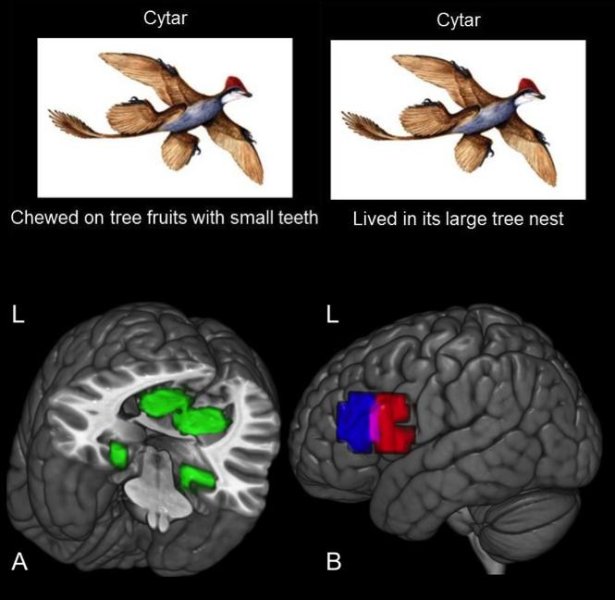Scientists have fixed the process of the formation of new knowledge in the brain

Where memories are stored
Scientists at Carnegie Mellon University for the first time managed to observe how new concepts form in the brain, and show that this happens in the same areas of the brain in different people. The results of the work will help to develop new teaching methods, as well as to understand the mechanism of memory loss in various disorders and brain injuries.
Researchers are confident that they were able to uncover the mechanism of how information about certain objects is stored in the brain, and that they could, observing the working brain, determine which subject a person is thinking about at the moment.
')
This study combined two university programs — Brain-Hub, which studies how brain structure and work affect complex behavior, and Simon, which seeks to improve student learning techniques so that this improvement is measurable.
Neuroscientist Marcel Just, who led the study, cites as an example of learning a new concept information about olingito , a small mammal animal that lives in the crowns of trees in South America in the humid mountain forests of Ecuador and Western Colombia. Zoologists first found and described it in 2013.

Olingito / Wikipedia
“Millions of people read information about Oingito and this changes the structure of their brain forever,” explains Just, a professor of cognitive neuroscience at Dietrich College of Humanities and Social Sciences, owned by Carnegie Mellon University. - And in our study, we studied the work of the brain in the laboratory at precisely such a moment. When people learned that despite the fact that Olingito is a predator, it mainly feeds on fruits, the left inner anterior part of the brain retains this information in accordance with its scheme of work. And the new knowledge, judging by the observations, was preserved in the same parts of the brain by different subjects - apparently, the brain all use the same data storage system. ”
The subjects during the study got acquainted with the vital activity of eight different extinct animals. In the picture green areas indicate brain areas in which the subjects memorized the animals' habitat, and red and blue their eating habits.
The subjects got acquainted with the information block about the life of animals for an hour, but at this time scientists observed their brains through functional magnetic resonance imaging machines. While receiving information, certain parts of the brain changed their level of activity.
An important open fact was that for information on each of the eight animals presented, people had their own specific areas of the brain involved. Therefore, a specially developed computer program was able to correctly determine which of the animals just studied the subject thought. In a sense, it was a mind reading.
It also turned out that for information about animals that were somewhat similar to each other, the activation areas that were stored in the brain also turned out to be similar. And besides, it was confirmed that once the learned knowledge about the animal remained in its place, even after people received additional information about this animal.
Scientists hope that such studies, ultimately, can help in studying how students understand more complex concepts and concepts, and, for example, which part of the concept a student does not understand. This can help develop new learning systems.

For example, such
In addition, research can help to understand why as a result of various diseases, age-related changes and injuries in a person, access to some of the stored memories and skills is lost. Loss of concepts can be a reverse process of acquiring them.
Different scientists approach the solution of brain work from different sides. Psychologists are trying to understand the logic of the work of consciousness , and physicists observe the work of neurons at the nanoscale.
Source: https://habr.com/ru/post/365649/
All Articles